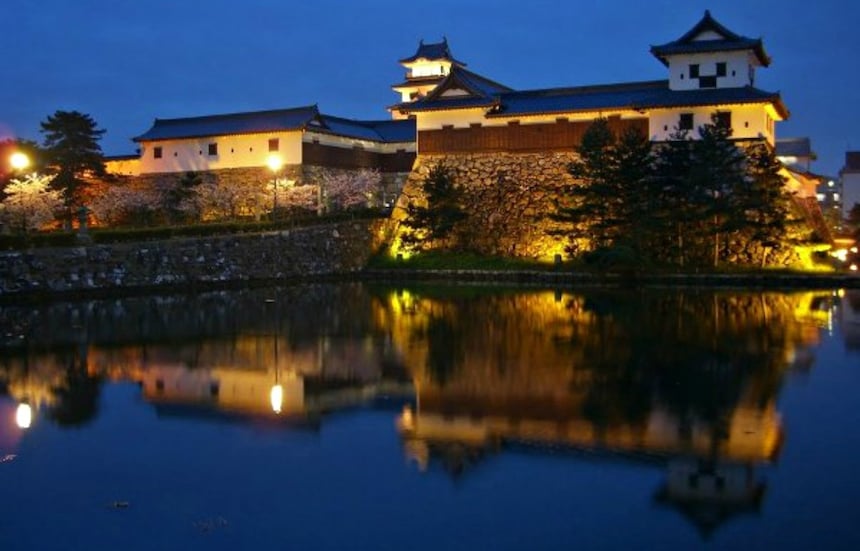16 Splendid Shikoku Castles
You'd be forgiven if the word castles brings to mind Himeji or Edo Castle, two attractions that are big draws with tourists and residents alike. However, the small island of Shikoku was also the home of some incredible architecture. Jcastle takes us on a journey to discover the Top 16 castles of the island, with a bit of history behind each one.
16. Kasashima Castle (Marugame, Kagawa, ☆)

http://www.jcastle.info/castle/profile/380-Kasashima-Castle
Kasashima Castle was built as a naval fortress on the island of Honjima of the Shiwaku Islands. It started as the fortified home of Takashina Yasutou. It is said that Fukuda Matajiro, a relative of the Kagawa clan, was the last lord in the late 16th century. The castle was abandoned after it was conquered by Chosokabe Motochika.
Very little remains of the castle. The main reason to visit is for Kasashima Town's well-preserved historic district with buildings from the old castle town days.
Read full story: www.jcastle.info
15. Urado Castle (Kochi City, Kochi, ☆)

http://www.jcastle.info/castle/profile/346-Urado-Castle
In 1560, Chosokabe Kunichika defeated the Motoyama clan and took over their castle. His son, Motochika, renovated the castle and made Urado Castle their new home.
Motochika died in 1599 and his son Morichika became the new lord of Urado Castle. After the Battle of Sekigahara (1600), the Chosokabe were stripped of their land and titles and replaced by Yamonuchi Kazutoyo. A group of the Chosokabe's retainers refused to acknowledge Yamanouchi and held the castle against him for nearly three months.
Yamanouchi Kazutoyo ruled from Urado Castle until he finished construction of Kochi Castle in 1603. It was then abandoned when he moved into Kochi Castle.
Read full story: www.jcastle.info
14. Kawashima Castle (Yoshinogawa, Tokushima, ☆)
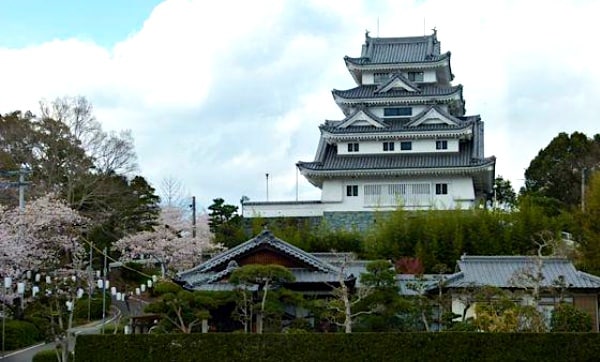
http://www.jcastle.info/castle/profile/268
Kawashima Koretada, a Miyoshi clansman, built Kawashima Castle on a 50-meter (164-ft) hill overlooking the Yoshino River in 1573. After Toyotomi’s forces had conquered Shikoku, and Hachisuka Iemasa was appointed the Lord of Awa (present-day Tokushima Prefecture), Kawashima Castle became one of Hachisuka’s "Nine Castles of Awa."
In 1585, Hachisuka stationed 300 soldiers at the castle under the command of Hayashi Tadakatsu to watch over the western part of Awa. Kawashima Castle was demolished in 1615 after the implementation of the "One Domain, One Castle" edict.
The concrete castle keep built in 1981 is nothing like the original, and the interior is completely modern with glass windows and painted white walls. Entry is free and on the top floor, there are a couple of suits of replica samurai armor and period clothes.The castle is about eight minutes on foot from JR Awakawashima Station on the JR Tokushima Line.
Read full story: www.jcastle.info
13. Aki Castle (Aki City, Kochi, ☆)
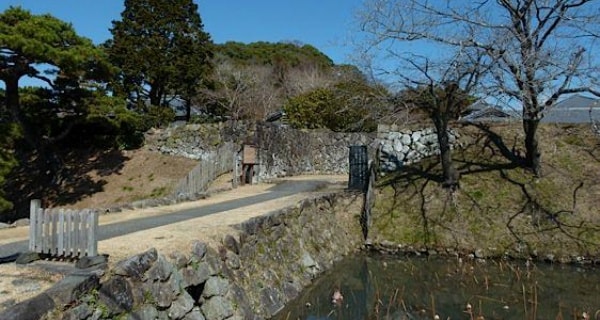
http://www.jcastle.info/castle/profile/283-Aki-Castle
Aki Chikauji founded this castle in a well-defended position between two rivers in 1309. The Aki family was one of the strongest in the area and ruled over the eastern part of Tosa until the Sengoku Period.
In 1569, Aki Kunitora attacked Chosokabe several times but eventually found himself under attack at Aki Castle. As supplies ran low and the castle defenders took ill from a poisoned well, Kunitora offered to surrender and take his own life if his people were saved. After the fall of the Aki, Chosokabe's younger brother Kosakabe Chikayasu became the new lord of Aki Castle.
Aki Castle served as an important staging area for Chosokabe's incursions into the Awa region. After the Battle of Sekigahara, the province was awarded to Yamanouchi Kazutoyo who stationed his retainer Goto Tameshige as the new lord of Aki Castle. The castle was decommissioned in 1615 under the "One Domain, One Castle" law, but the grounds and fortifications stayed in use until the Meiji Period as a local earthwork fortification.
Read full story: www.jcastle.info
12. Yuzuki Castle (Matsuyama, Ehime, ☆☆)
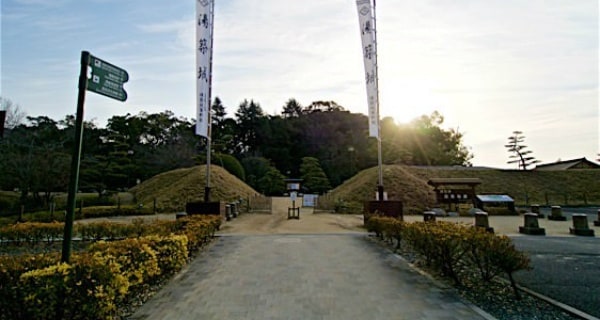
http://www.jcastle.info/photos/view/2485-Yuzuki-Castle
During the Nanboku-cho Period (1336-1392), Kono Michimori moved the clans' home base from Kono-Gun to Yuzuki Castle in Dogo, which was a more prosperous area. Despite intervention by the Hosokawa family, and internal family disputes, the clan served the Ashikaga Shogun family, and was allied with neighboring clans, including the Ouchi, Otomo and Mori clans.
Around 1535, Kono Michinao constructed the outer moat of the castle, thus giving it two large moats and increasing its defenses. He also strengthened his relationship with Murakami Michiyasu, son-in-law and pirate leader of the Inland Sea (Kurushima). In 1585, another Michinao (Ushifukumaru), the last heir, surrendered the castle to Toyotomi Hideyoshi. This was the end of the Kono clan in Iyo. Yuzuki Castle was briefly ruled by Fukushima Masanori until it was abandoned.
Read full story: www.jcastle.info
11. Ichinomiya Castle (Tokushima City, Tokushima, ☆☆)

http://www.jcastle.info/castle/profile/228-Ichinomiya-Castle
Ichinomiya Castle was a large mountaintop fortress with multiple baileys situated in an area of strategic importance, which was bordered in front by the Akui River and in the rear by protective mountains.
The remains of the honmaru (main bailey) stone walls can clearly be seen. The honmaru is situated at 144 meters (472 ft) above sea level. Nearby, are the remnants of surrounding baileys (Myojinmaru, Saizomaru, Mizunotemaru, Oguramaru and Shiinomaru) and a water reservoir.
Since 1338, generations of the Ichinomiya family had been the ruling lords of the castle. But in 1585, Toyotomi Hideyoshi conquered Shikoku and made Hachisuka Iemasa the lord of the castle. Soon afterwards, Iemasa built Tokushima Castle and relocated there. In 1615, Ichinomiya Castle was dismantled under the feudal domain edict.
There were two battles fought over Ichinomiya Castle, the first one was in 1581 between Ichinomiya Narisuke and Sogo Masayasu. Narisuke, with support from Chosokabe Motochika, beat Masayasu. In the second battle in 1585, Hashiba Hidenaga with 50,000 troops, which was part of the Toyotomi Hideyoshi invasion force of Shikoku, besieged the castle. They overwhelmed the defending 10,000 Ichinomiya troops in just 20 days by attacking the castle from three sides (north, east and west) and cutting off its water supply.
Read full story: www.jcastle.info
10. Nakamura Castle (Shimanto, Kochi, ☆☆)

http://www.jcastle.info/castle/profile/216-Nakamura-Castle
In 1468, during the turmoil of the Onin War, Ichijo Norifusa left Kyoto for Nakamura. When Norifusa was named the lord of Tosa, the small village of Nakamura was made the capital of the Tosa domain. It remained so for about a century until 1573 when Chosokabe Motochika banished Lord Ichijo's descendents to Kyushu.
The castle was renovated in 1613 by Yamauchi Masatoyo (also known as Yoshitoyo). It was demolished in 1615 in accordance with the edict which required that each domain would only be allowed one castle.
Read full story: www.jcastle.info
9. Kawanoe Castle (Kawanoe, Ehime, ☆☆)
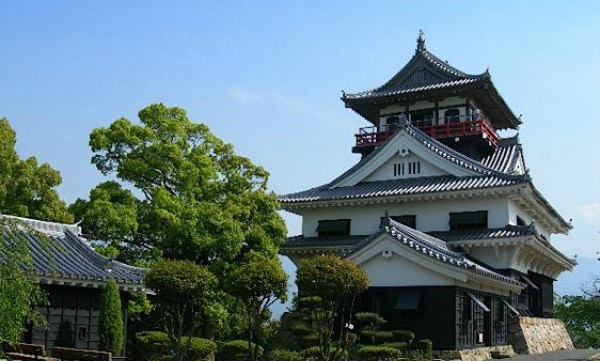
http://www.jcastle.info/castle/profile/190-Kawanoe-Castle
The castle was originally built as a fort for the Kohno clan by Dobi Yoshimasa in 1337. In 1342, the castle was attacked and taken over by Hosokawa Yoriharu. The castle was ruled by the Hosokawa until it fell to Chosokabe Motochika in 1582.
After Hideyoshi subjugated Shikoku, the lord of Kawanoe Castle changed frequently until it was abandoned by Kato Yoshiaki in 1611.
Read full story: www.jcastle.info
8. Tokushima Castle (Tokushima City, Tokushima, ☆☆☆)
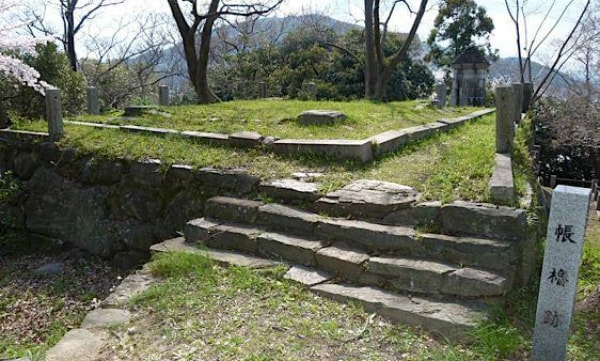
http://www.jcastle.info/photos/view/2950-Tokushima-Castle
In 1385, Hosokawa Yoriyuki built Inoyama Castle on the present site of Tokushima Castle. After Toyotomi forces conquered Shikoku, Hachisuka Iemasa was appointed the lord of Awa Province (present-day Tokushima Prefecture). Initially, Hachisuka Iemasa based his headquarters at Ichinomiya Castle. However, it turned out to be a rather inconvenient location to govern Awa, so he moved to Tokushima Castle in 1585. The existing fortifications were enlarged and improved.
Initially, a castle keep was built in the honmaru at the top of the hill, but it was pulled down and a new three-story castle keep without the usual stonewall foundation (tenshudai) was built in the eastern ninomaru (the outer citadel) in the early Edo Period. The castle lasted eight years into the Meiji Period before it was demolished in 1875. Only the Washimon (Washi Gate) survived, but it was destroyed during a World War II air raid in July 1945. The current Washimon was rebuilt in 1989 to mark the centenary of Tokushima City.
Read full story: www.jcastle.info
7. Imabari Castle (Imabari, Ehime, ☆☆☆)
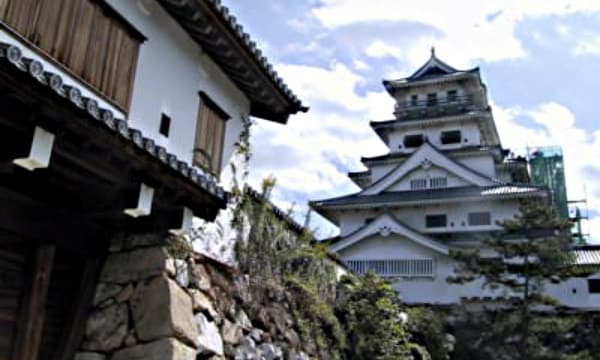
http://www.jcastle.info/castle/profile/45-Imabari-Castle
For his services during the Battle of Sekigahara, Takatora Todo was awarded this large parcel of land on the Iyo Peninsula. Takatora began construction of the castle in 1602 and moved here from his castle at Uwajima in 1608 when the palace was completed. That same year he was restationed at Tsu in Ise Prefecture. His adopted son, Takayoshi, took over Imabari.
In 1635, Takatora's adopted son Takayoshi was reassigned and Sadafusa Matsudaira moved in. Imabari Castle was then controlled by the Matsudaira until the Meiji Restoration. The location of Imabari Castle is very important as a strategic militarily point from which to control traffic through the Seto Sea.
The main keep of Imabari Castle was disassembled in 1610 and carried to Osaka. It was originally supposed to become the main keep of Igaueno Castle but was instead rebuilt as the main keep of Kameyama Castle.
The scaffolding you see on some of the pictures is to there to repair damage suffered in an earthquake.
Read full story: www.jcastle.info
6. Takamatsu Castle (Takamatsu, Kagawa, ☆☆☆)
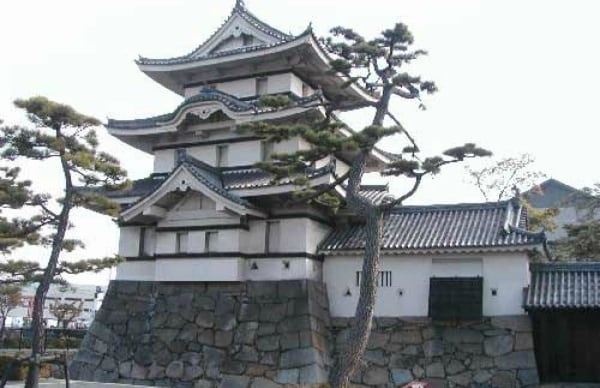
http://www.jcastle.info/castle/profile/80-Takamatsu-Castle
Ikoma Chikamasa was stationed in Takamatsu by Toyotomi Hideyoshi in 1587. He started building the castle in 1588 and it was completed in 1590. Four generations of Ikoma ruled Takamatsu until the 11-year old Takatoshi was re-stationed to the remote Dewa Province in Northeastern Japan in 1639 with greatly reduced lands. This was a punishment for conflicts caused by the Ikoma clan and their retainers. Tokugawa Ieyasu's grandson, Matsudaira Yorishige, replaced Ikoma in Takamatsu. The Matsudaira family continued to rule until the Meiji Period.
In the Edo Period, Takamatsu Castle had a three level, five story main keep and about 20 yagura (turrets). It's uniquely constructed on the waterfront, where it draws water from the ocean for its moats. It's considered one of the three great water or waterfront castles. The castle was decomissioned in 1869 and the main keep was torn down in 1884.
Read full story: www.jcastle.info
5. Marugame Castle (Marugame, Kagawa, ☆☆☆☆)
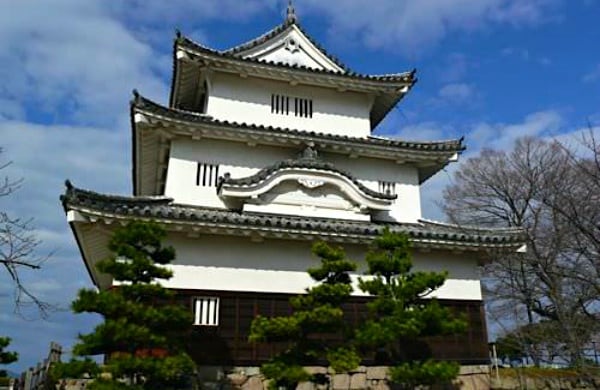
http://www.jcastle.info/castle/profile/9
Ikoma Chikamasa, the lord of the Sanuki area of Kagawa Prefecture, originally ruled from Takamatsu Castle. While there, he built and moved to Marugame Castle, placing his son in charge of Takamatsu Castle. Marugame Castle was decomissioned as part of the "One Domain, One Castle" law in 1615.
Marugame Castle was resurrected in 1641 when Yamazaki Ieharu was granted the small fiefdom of Western Sanuki. He rebuilt the castle into what we see today and developed the surrounding castle town of Marugame.
Read full story: www.jcastle.info
4. Uwajima Castle (Uwajima, Ehime, ☆☆☆☆)
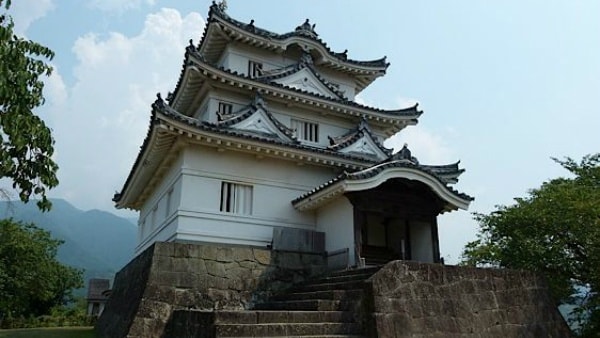
http://www.jcastle.info/castle/profile/10-Uwajima-Castle
Todo Takatora built this castle after being granted the small fiefdom around it by Toyotomi Hideyoshi in 1595. After the Battle of Sekigahara, Todo Takatora moved to Imabari leaving it in the hands of Tomita Nobutaka.
From 1615 until the Meiji Restoration, Uwajima Castle was ruled by Date Hidemune and his descendants. The basic territory and layout of the castle did not change from the time of Takatora, but the Date clan completed the fortifications with yagura, gates and stone walls.
Read full story: www.jcastle.info
3. Ozu Castle (Ozu City, Ehime, ☆☆☆☆)
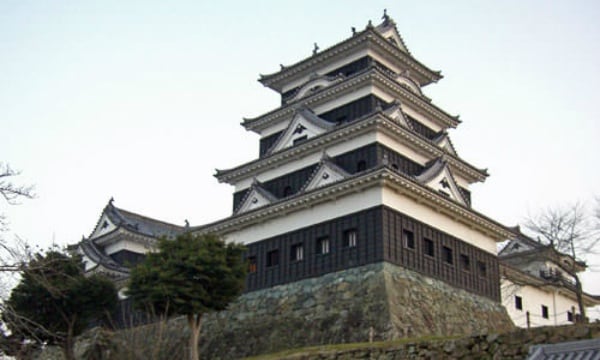
http://www.jcastle.info/castle/profile/82-Ozu-Castle
The first fortifications on this site were constructed in 1331 by Utsunomiya Toyofusa. From 1585 to 1617, the castle was ruled by a quick succession of lords including Kobayakawa Takakage, Toda Katsutaka, Todo Takatora and Wakisaka Yasuharu. The castle you see today was most likely built up during this time.
Kato Sadayasu arrived in 1617 and his descendants ruled until the Meiji Restoration. The main keep was destroyed in 1888. The reconstruction was completed in 2004 using wood and traditional methods. It also connects two of the original yagura.
Read full story: www.jcastle.info
2. Kochi Castle (Kochi City, Kochi, ☆☆☆☆)
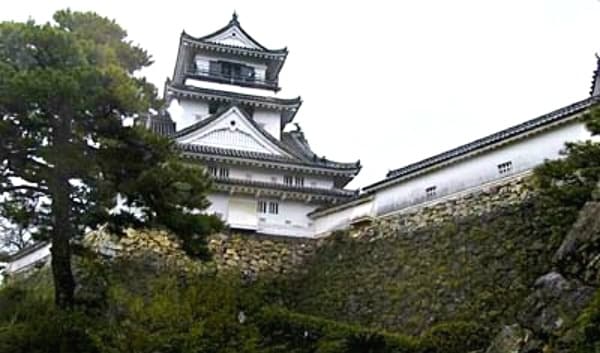
http://www.jcastle.info/castle/profile/51
Yamanouchi Kazutoyo began the construction of Kochi castle in 1601 after he was stationed in the Tosa region. Originally he resided in Urado Castle but decided to build a new castle in its current location. Yamanouchi moved two years after the main keep and main structures were finished. The whole castle was completed in 1611.
Much of the castle, including the main keep, was burned to the ground in a great fire that broke out in the castle town in 1727. The current main keep dates from the reconstruction, which was completed in 1748. It wasn't until 1753 that the castle was completely rebuilt.
One of the rare aspects of this castle is that all the structures from the original honmaru (the core of the castle) remain. Exhibits inside the castle show that it was in a terrible state of neglect until they repaired it between 1948 and 1959.
Read full story: www.jcastle.info
1. Matsuyama Castle (Ehime, ☆☆☆☆☆)
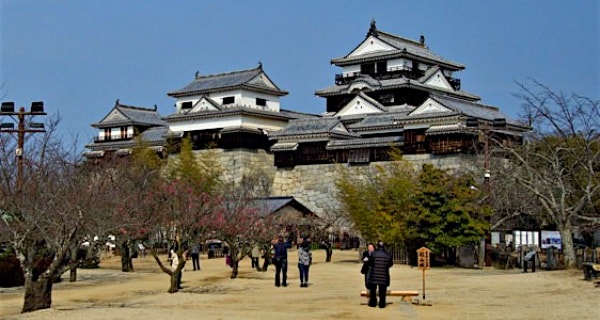
http://www.jcastle.info/castle/profile/33-Iyo-Matsuyama-Castle
The original castle, built in 1603 by Kato Yoshiakira, had a large five-story central tower (tenshu) that was actually moved to Aizu Castle when Kato was transferred there in 1627. Tadachika Gamo became the new lord of Matsuyama Castle and completed construction of the ninomaru before he died in 1635, leaving no heirs.
In 1635, Matsudaira Sadayuki moved into Matsuyama Castle and the Matsudaira family ruled over the area at the end of feudalism. Sadayuki rebuilt the tenshu with three stories in 1642. This main keep was struck by lightning and burned down on New Year's day in 1784. The construction of the current main keep was not begun until 1820 and not completed until 1854. From 1926 on, many of the yagura, gates and other structures were destroyed by arson and bombings in WWII.
As a relative of Tokugawa family, Matsudaira Sadaaki naturally fought for the Tokugawa Shogunate in several battles at the time of the Meiji Restoration. Once the emperor regained political power, Sadaaki was a wanted man and considered an enemy of the emperor. In order to avoid attack, he surrendered and allowed Tosa soldiers into the castle while he sought penance and refuge in Joshinji temple in Matsuyama. His sincerity was accepted and thus Sadaaki and Matsuyama Castle were saved from attack.
This is one of the best castles in the country to visit, a very close second to Himeji. The bare wooden exterior is unique among most castles and gives the whole castle a more historic feel.
The Matsudaira family eventually gave the castle to the city of Matsuyama in 1923. The city has been working since 1966 to repair the original structures and rebuild those that were destroyed.
Read full story: www.jcastle.info

